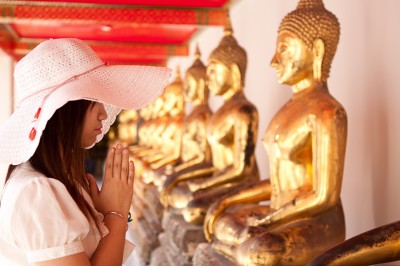by Ilaria Lonigro
 |
| Photo by a454, FreeDigitalPhotos.net |
More than 100 millions pilgrims move every year to visit holy sites. In 2001, 60 million Hindu pilgrims attended the Maha Kumbh Mela in Allahabad, making it the largest human gathering in recorded history, according to ARC (Alliance of Religion and Conservation). Moreover, an estimated 2.5 million pilgrims visit Mecca every year for the Islamic Hajj. Such pilgrimages have a huge impact on local communities, in terms of CO2 emissions, of water and energy supply and of garbage disposal, not to talk about the consequences on biodiversity.
The St Bishoy Monastery at Wadi El Natroun in Egypt is visited every summer by 100.000, mainly Coptic Orthodox pilgrims. This has a negative footprint on the lakes laying nearby, which are the natural habitat for many rare species of birds. For all these reasons, in 2009, at Windsor Castle in the United Kingdom, ARC held an event called “Many heavens, one Earth: faith commitments for a living planet". UN Secretary-General Ban Ki-Moon and Prince Philip were there and nine world religions committed to greening up pilgrimage routes and sites. Thus began in Europe what UNDP called “potentially the world's largest civil society movement on climate change".
Since then, things have been improving. Two years later, still in Europe, this time in Assisi, Italy, ARC and WWF launched The Green Pilgrimage Network, with the aim of creating a positive footprint during pilgrimage. The initiative is born under a good sign: Assisi, in fact, is the hometown of St. Francis, the Catholic patron of ecology. The man, known for his love of animals, wrote the Canticle of Creatures. The Green Pilgrimage Network is officially supported by Olav Kjorven, director of policy at the UN Development Programme, which also produced the “Muslim Seven Year Action Plan on Climate Change”.
Today, from Luss, Scotland, to Trondeheim, Norway, from Haifa, Israel, to Jinja Honcho, Japan, more and more cities are becoming Green Holy Cities, following the Green Pilgrimage Network Handbook born in Europe. It is a precious guide for faith leaders, cities and pilgrims and introduces shared environmental goals. Besides this, it collects examples and strategies of good practices at many levels, from the improvement of waste management to the banning of cars on pilgrimage routes.
The pilgrimage supply chain involves a wide range of enterprises: from restaurants to tour operators, from museums to national parks, then lodging facilities, airlines, cruises, airports, municipalities, souvenir sellers, coach companies... All of them can do much to green up these religious events. Just imagine what would happen if every pilgrim ate fair-trade and locally sourced food!
Investment promotion agencies are focusing more and more on tourism in developing countries, where many religious sites are. If made in a correct way, these investments can generate a sustainable economy in those countries. The green message is spreading throughout the world and raises awareness and good practices among pilgrims.
Husna Ahmed is the principal author of the booklet “The Green Guide for Hajj”, which promotes ecologically-sustainable practices among Hajj pilgrims, who, according to the UK-based Faith Regen Foundation, used to dump 100 million plastic water bottles during one Hajj at La Mecca. Why not travel with a flask? “All the waste from food, all the fumes from coaches travelling around the city, all the energy used for powering local hotels, it has a significant environmental impact," Ahmed says. "And that's before you think about the carbon footprint of all those flying in from halfway around the globe" he adds. “If you respect the Creator, then you respect the Creations” seems to be the the new Word.

No comments:
Post a Comment